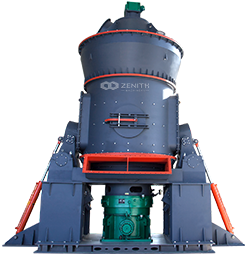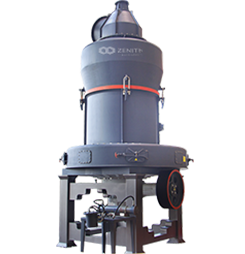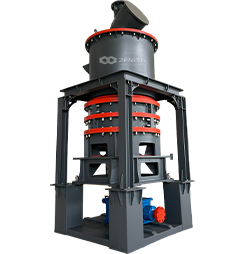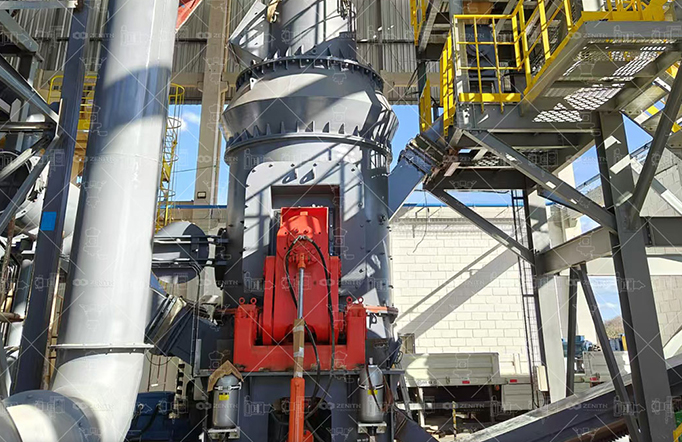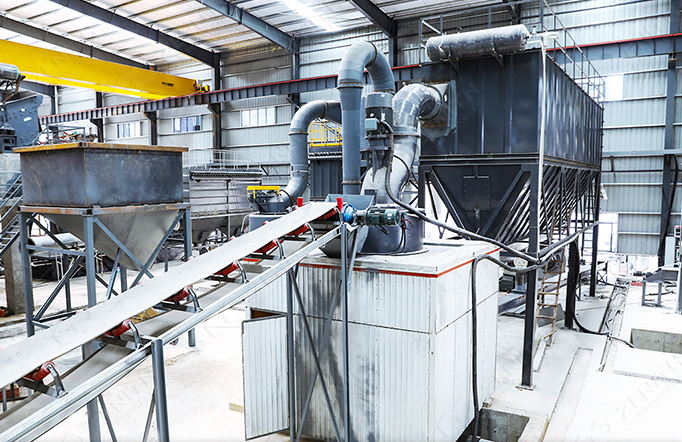INTRODUCTION OF LIMESTONE

Limestone, commonly referred to as lime rock, is a carbonate rock primarily composed of calcite. It may sometimes contain dolomite, clay minerals, and detrital minerals, exhibiting various colors such as gray, gray-white, gray-black, yellow, light red, and brown-red. Its hardness is generally low, and it reacts vigorously with dilute hydrochloric acid, producing bubbles. It is classified as a sedimentary rock based on its origin.
Limestone is a common non-metallic mineral and a valuable resource with a wide range of applications. After being processed by a grinding mill, limestone can be applied in various fields, yielding considerable economic benefits. With the tightening of environmental protection policies, the lime deep processing industry has received increased attention in recent years. In addition to traditional applications in construction, metallurgy, and agriculture, lime is also increasingly used in environmental protection fields such as wastewater treatment and flue gas desulfurization. Lime deep processing mainly refers to the processing applications from limestone to lime. In simple terms, limestone is calcined to produce lime, which is primarily composed of calcium oxide, also known as quicklime. Quicklime, when hydrated, becomes slaked lime, which is primarily composed of calcium hydroxide.

APPLICATION OF LIMESTONE
-
Production of calcium oxide
Calcium oxide is obtained by high-temperature calcination of limestone, commonly known as quicklime. Calcium oxide has various industrial applications, such as being used as an alkaline oxide in environmental protection fields like industrial wastewater treatment, waste incineration, and flue gas desulfurization. Additionally, calcium oxide is widely used in highways, high-speed rail, construction, plastics, rubber, food, and pharmaceuticals.
-
Production of calcium hydroxide
Calcium hydroxide is formed by the dissolution of calcium oxide in water, commonly known as slaked lime or hydrated lime. Calcium hydroxide can be used as an acidity regulator in food, providing buffering, neutralizing, and solidifying effects. It is also widely used in the production of calcium supplements, pharmaceuticals, the synthesis of food additives, and high-tech biomaterials.
-
Rubber industry
In the rubber industry, the addition of calcium carbonate can improve the dispersion, vulcanization elongation, and tear resistance of rubber products. The incorporation of calcium carbonate can enhance the processing and physical properties of rubber.
-
Plastic industry
Calcium carbonate can increase the volume of plastics, reduce product costs, and improve the dimensional stability, hardness, and rigidity of plastics. It also enhances the processing performance, heat resistance, and light scattering properties of plastics.
-
Other fields
Limestone can also be used to produce nano calcium carbonate, a functional inorganic filler with a particle size of 1-100 nm, widely applied in rubber, plastics, papermaking, inks, coatings, sealants and adhesives, pharmaceuticals, toothpaste, and food. Additionally, limestone itself, as a carbonate rock, has fundamental applications in construction and road building.
LIMESTONE GRINDING AND DEEP PROCESSING FLOW
-
01Calcination
The selected limestone is sent to an environmentally friendly lime kiln for high-temperature calcination, transforming it into quicklime.
-
02Grinding
Quicklime can be directly crushed using a MTW trapezium mill or LM vertical mill, processing it from lump lime into powdered lime, which can be supplied directly to the market.
-
03Slaking
Quicklime can also undergo further deep processing by being sent to the calcium hydroxide production line, where it is transformed into slaked lime after five stages of slaking (1 stage pre-hydration - 3 stages homogenization - 1 stage pulverization).
-
04Classification and Collection
The well-digested slaked lime can be directly screened using a classifier, and the collected product is high-quality calcium hydroxide, while excess residue is discharged.
-
05Grinding, Classification, and Collection
The slaked lime can also be ground using a MTW trapezium mill or LM vertical mill. After achieving the required fineness, it is classified using a classifier and collected in a dust collector, resulting in ordinary calcium hydroxide products.
RECOMMENDED GRINDING EQUIPMENT
-
LM VERTICAL ROLLER MILL
Capacity: 10-170T/H
Fineness: 0.84-0.037mm
New grinding device
Automated electronic control system
Drying and grinding two-in-one
-
MTW EUROPEAN TRAPEZIUM MILL
Capacity: 3-60T/H
Fineness: 1.6-0.045mm
Patented product
Thin oil lubrication system
Energy saving, environmentally friendly
-
LUM ULTRAFINE VERTICAL MILL
Capacity: 3-15T/H
Fineness: 325-2500mesh
Higher yield and better quality
Multi-head powder selection,more economical
Safe and reliable,stable operation
-
XZM ULTRAFINE GRINDING MILL
Capacity: 500-25000KGPH
Fineness: 325-3250mesh
Stable, reliable, environmentally friendly
High efficiency and low loss
High fineness
INTEGRATED SOLUTION FOR LIMESTONE GRINDING
As a provider of comprehensive grinding equipment solutions, Zenith has been committed to developing more efficient, energy-saving, and environmentally friendly grinding equipment. With nearly 40 years of experience in the design, research, and manufacturing of grinding mills, it has launched different models of grinding mills to meet the preparation of limestone powder with various particle sizes. Known for low construction cost and green environmental protection, it is an ideal choice for customers.
-

Raw Material
Testing -

Technical
Communication -

Solution
Development -

Equipment
Manufacturing



-

Installation and
Commissioning -

Operation
Guidance -

Technical
Q&A -

Spare Parts
Supply



CUSTOMER CASES
ABOUT ZENITH
Shanghai Zenith Machinery Co., Ltd. is a hi-tech enterprise specializing in the research,development and production of industrial powder grinding equipment. We focus on the needs of customers in different fields, and our product processing range covers 1-3mm coarse powder, 20-400mesh fine powder, 400-1250mesh ultrafine powder and 1250-3250 mesh micro powder. Our equipment have got ISO international quality system certification, European Union CE certification and Customs Union CU-TR certification.
At present, our service network has covered more than 180 countries and regions in Asia, Africa, Europe, America and Oceania, and established overseas offices in more than 30 countries.
Get Solution & Price Right Now!
If you would like to receive personalized solutions and a free quote, kindly provide your information below.


